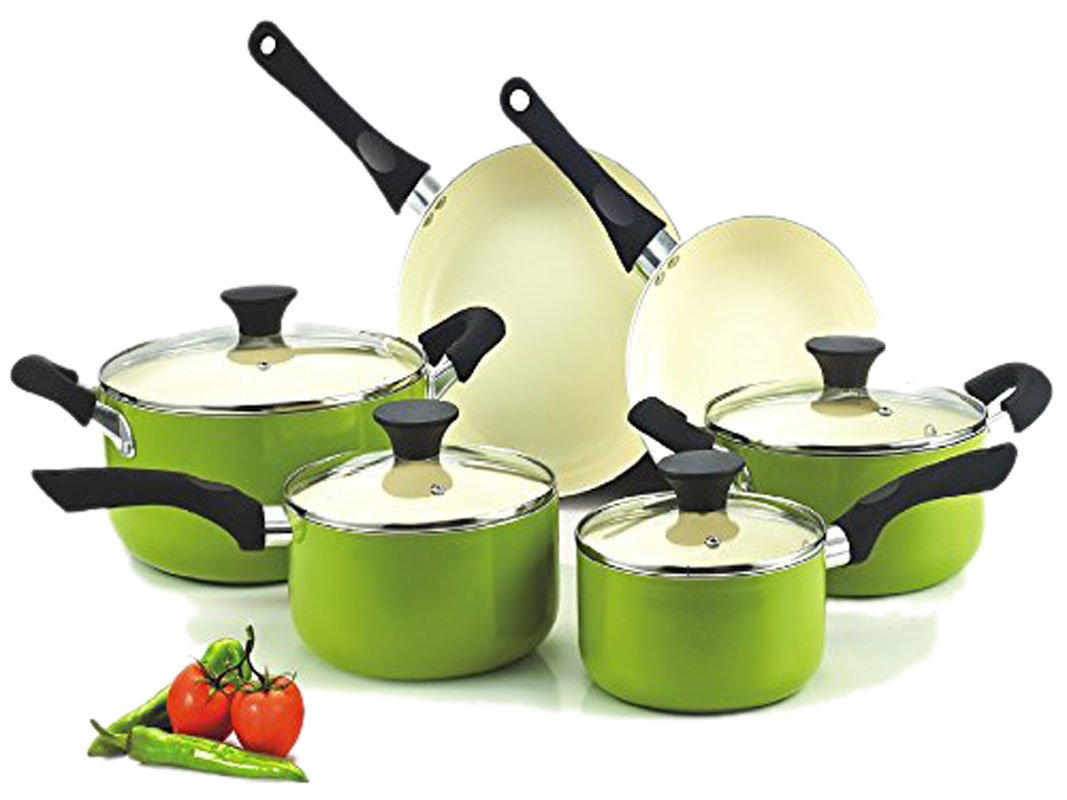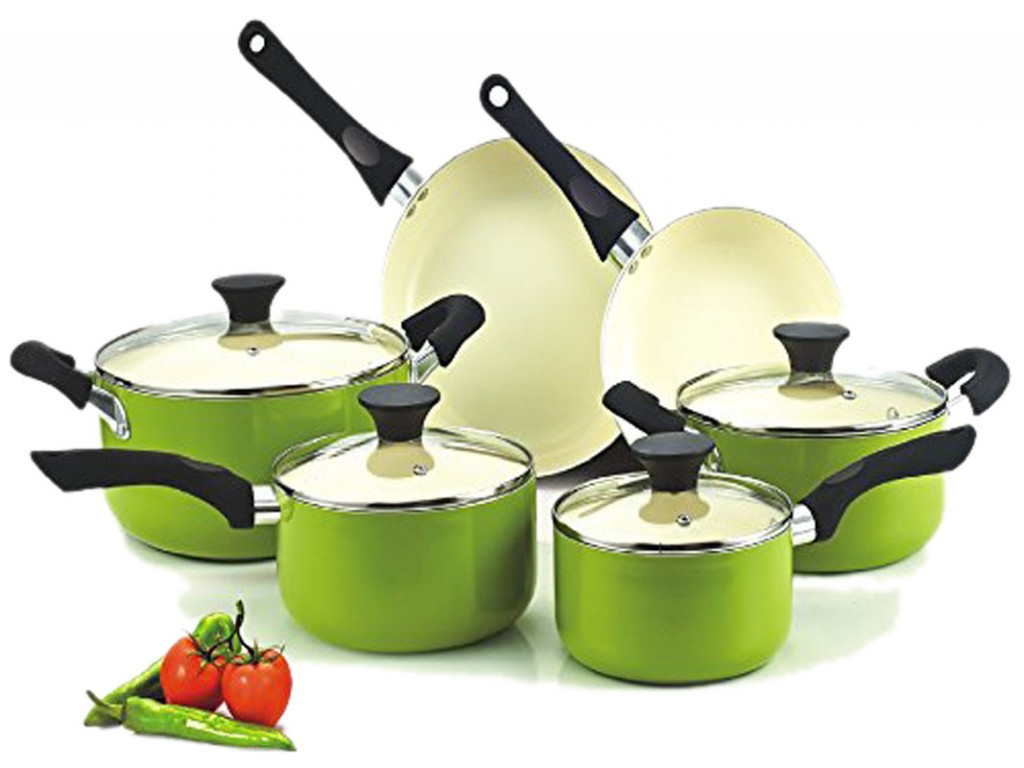
Essential to a truly healthy and green kitchen is not only the food you cook, but the cookware used for cooking it. There are several aspects of kitchen operations that even the best of cooks often ignore. Do the utensils used safeguard your health? Do they leach harmful chemicals or heavy metals into the food? Are your pots and pans made of eco-friendly material which can be easily recycled?
The various materials used in the manufacture of kitchenware come with their share of plusses and minuses. Some are better than the others. Still others are not desirable when cooking particular types of food. Till very recently there was very little focus on the use of cookware but of late there is growing realisation that one must choose from the different kinds of cookware that are widely advertised and available in the market.
Eco-friendly material covers a large spectrum. Here we will be talking about those containers and vessels that can last long, be reused, refurbished and recycled, so that they can stay out of the landfill for the longest period. In the kitchen we have two kinds of containers — the ones we cook in and the ones in which we store the food. And then of course the vital accessories like ladles, spoons, straws and tea strainers.
Let’s start with cooking containers. Of course, the safest ones are those that leach the least chemicals and heavy metals. Experts recommend brands that are constructed of ceramic-coated aluminium with stainless steel handles. Let’s see what they say on how each material reacts to heat.
Cast iron vessels are among the most durable. Though they leach iron into the food, it is considered safe by experts. One option worth keeping in your kitchen is enamel or glass-coated cast iron vessels. It has all the qualities of cast iron cookware but does not leach iron into your food. Moreover, it works well for cooking acidic food because of the coating.
Stainless steel utensils are very popular in Indian kitchens since they are affordable, durable, light and easily washable. The good news is that they are relatively safe but before buying stainless steel it is worth enquiring from the dealer about the proportion of chromium and nickel in the product. Some brands have this information embossed on the surface. As a thumb rule, cookware with 18/8 or 18/10 is regarded “food-safe” since they are unlikely to leach into the food. These proportions indicate the chromium and nickel content in the product. Thus 18/8 stainless steel indicates it has 18 per cent chromium and 8 per cent nickel in addition to traces of carbon and iron. Stainless steel, it must be noted, is durable and can be recycled.
Glass cookware is non-toxic and safe. It is strongly recommended, particularly as bakeware. But opinions are divided on use of glass vessels over the stove. Of course, some brands are advertised as being safe enough to be used on any heat source be it the cooking range or an oven. However, the feedback from those who work in the kitchen is that glass vessels can be used for specialised dishes only. They feel that they cannot endure sustained heat or sudden changes in temperature. On the plus side, glass is almost 100 per cent recyclable and great for storing food.
Copper vessels with stainless steel inner lining are also a good option. If the coating is either 18/8 or 18/10 stainless steel, it won’t leach into the food. And copper’s quick-heating properties ensures faster cooking and savings on energy consumption.
If you use non-stick cookware, you must be careful about its polytetrafluoroethylene coating. It is best to use wooden ladles to stir non-stick surfaces. It is always wise to avoid leaving such cookware on the heat for a long time.
There are other green rules that can be followed in the kitchen as well. For instance, it would be great if you get metal straws for family and guests instead of keeping throwaway plastic ones to pop into drinks. Washable recycled cloth kitchen napkins too are much more desirable compared to paper napkins, which are not recyclable and must only be used while travelling.
One of the activities every morning in a typical Indian kitchen is packing food for members of the family who go to work or attend school or college. Using green options for this can reduce your footprint significantly. Mumbai dabbawallas tiffin box is extremely eco-friendly. It would be a great idea to replicate it, if possible. For school children or college going students, who have an aversion to a big lunch box, banana leaves are a great option for wrapping rotis or sandwiches. If foil is their choice of packing, insist that it is brought back and reused. Of course, ensure you buy recycled foil and not the virgin brands for packing your child’s food.
As for children, the need to inculcate green values in them at an early age is the duty of every responsible parent. If that is done, we can ensure a green future for the next generation. Human beings are creatures of habit and only if we change our preferences as well as those of our growing children, will we be able to inhabit an eco-friendly world.
The writer is a senior journalist who writes on environmental issues








